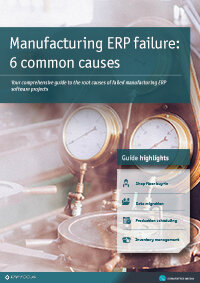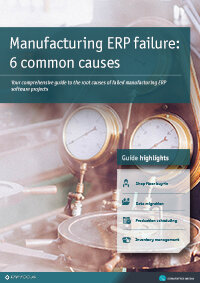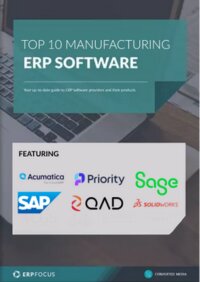The importance of manufacturing ERP integration with supplier systems
Your goals for your manufacturing ERP system may include improving supply chain visibility and reducing the lead time for procuring parts from suppliers. At the same time, you want the quality of purchased materials to improve. These goals might suggest you need to share some of your data with suppliers and, in turn, receive data from them. Exporting and importing data through ERP integrations can greatly expand the functionality of your manufacturing system. In the case of supplier management, missing out on integration opportunities can leave your manufacturing ERP system in the dark.
ERP-to-supplier communication
Supplier integration begins with some simple and obvious data. Do you have up-to-date contact information? If your automated system emails to the supplier are not going to someone who can and will reply, your most simple ERP integration fails at this point. You should already have the basics, such as the lead time for each item you order and where that order is manufactured. If a supplier updates their lead time to 9 weeks, but your integration with their CRM was implemented incorrectly, your procurement team will be working from incorrect data leading to order delays and customer loss - a recipe for manufacturing ERP failure.
Little adjustments to your ERP processes can vastly improve the chances of integration success. If you call a part “ABC” and you know they call it by their catalog number “1234”, ensure your ERP has a field for their catalog number and all outbound communication references both data points.
Supplier-to-ERP communication
Receiving data from your supplier is equally important as the data your ERP sends to them. Suppose your order is for a circuit board with an integrated circuit and additional components. Your bill of materials might specify a certain component you have always used in the past. ERP integration with the supplier could indicate what you really want is a component with eight leads that runs at 3.2 volts. Your supplier may already have a source for a generic component they have used successfully for years at a much lower cost. Missing such an opportunity can vastly reduce the potential for a successful ERP implementation.
In the case of supplier management, missing out on integration opportunities can leave your manufacturing ERP system in the dark.
Supply chain visibility means communicating with your suppliers. You might have asked for shipping information at the time of shipment. This type of request was standardized years ago using EDI and is called an advance shipping notification (ASN). Do you have the ability to receive EDI communications in your ERP or through an additional service? If not, this particular supplier communication will fail to arrive. Equally important is whether your manufacturing ERP allows you to plan your work around the date within the ASN? What value is receiving a supplier communication if it is not acted upon. It is worth noting some ERP systems only include this feature as an optional higher-cost add-on, so make sure you know where you stand when you agree your ERP purchase.
Keep in mind that your supplier is just the business that provides your manufacturing components. Third parties, such as transportation providers and distribution centers, also play a part in a lean supply chain. So remember to setup ERP integrations with these links in the chain.
Free white paper

Manufacturing ERP Failure: 6 Common Causes
Get your comprehensive guide to the causes of manufacturing ERP failure

Featured white papers
Related articles
-

4 training tips for manufacturing ERP success
These four training tips will help your employees get the most out of your new manufacturing ERP ...
-

CMMC Compliance: What Aerospace and Defense Manufacturers Need to Know
Key insights on CMMC compliance, deadlines, and securing DoD contracts with CMMC 2.0 certificatio...
-

Nine signs you need an eCommerce ERP integration
A guest blog from Brightpearl discussing eCommerce ERP and integration




